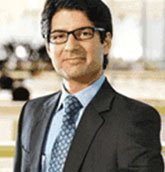7 MinsAug 18, 2021
A peaceful retired life, free from financial worries is achievable, with proper planning and asset allocation. When planning for your post-retirement life, choose investment avenues that protect capital, compound wealth, and potentially counter
the inflation bug. In short, clocking efficient real returns (also known as inflation-adjusted returns) is necessary so that the expenses during your golden years of life are taken care of. If you are nearing retirement or already retired,
here are some investment options that may help you clock a decent real return and generate regular income post-retirement.

Preserve wealth for future expenses and manage regular income
Closer to retirement, shift your accumulated corpus in such a way that you can preserve wealth, while simultaneously generate returns for post-retirement expenses.
Mutual funds can help achieve this dual purpose. Up to 20% of your corpus may be parked into equity mutual fund schemes so that you potentially counter inflation. You may consider
large-cap funds, flexi-cap funds, or hybrid funds taking into account quantitative parameters (viz. returns across time frame, returns across market cycles, risk ratios, the expense ratio, portfolio turnover, etc.) and qualitative parameters
(viz. portfolio characteristic, the credential of the fund management team, among other aspects).
During your working years, ensure you build a large enough corpus by investing in equity mutual funds. Once you retire, up to 20% of your corpus may still be parked into equity mutual fund schemes and you may opt for the Systematic Withdrawal
Plan (SWP) from this corpus, to generate regular income. Through an SWP, you can withdraw a fixed sum of money from a mutual fund scheme regularly (monthly, quarterly, half-yearly or annually). The remaining investments would hold the potential
to generate returns over time.
Consider this example: Say, you invested in equity-oriented mutual funds in the early days of your career and have built a corpus of approximately Rs 81.64 lakh by the time of retirement. Now, when you are retiring at the age of 60, reallocate
around 20% of this corpus, in equity mutual funds i.e. approximately Rs 16.64 lakh on the assumption that it clocks a 10% compounded annualised return. Further, say your life expectancy is around 85 years.
This corpus can last you for about 25 years helping you with systematic payouts or withdrawals of approximately Rs 15,000 each month:
Inflow
through SWP from Equity Mutual Funds
|
Particulars
| |
Age
at present (in years)
| 60
|
Life
Expectancy (in years)
| 85
|
Post-retirement
no. of years
| 25
|
Corpus
in Equity MFs (in Rs)
| 16,64,464
|
Monthly
Payout (approx. in Rs)
| 15,000
|
Inflation
Rate
| 6%
|
Assumed
Equity Returns p.a.(CAGR )
| 10%
|
(Tables above are for illustration purpose only)
If your investments in equity mutual funds post-retirement clock a slightly better rate of return (say 12% CAGR), then you may end up with a positive cash flow even after the 85th year of your life.
By systematically withdrawing from your mutual fund investments during your golden years, you would accrue the following key benefits:
- Plan your withdrawals better, as per your needs
- Counter inflation
- Benefit from rupee-cost averaging
- The remaining investments/units would benefit from the power of compounding
SWP would not only provide you with a fixed source of income but also inculcate a disciplined approach to spending the money.
However, keep in mind that the withdrawals from the equity-oriented would be subject to Short-Term Capital Gain Tax or Long-Term Capital Gain Tax, as the case may be, depending on the holding period for the scheme and could be subject to volatility
as well.
The withdrawals from equity-oriented mutual fund schemes should also be done to rationalise asset allocation, wherein after retirement, a high allocation should be held in suitable debt-oriented mutual fund schemes and fixed-income instruments
for capital protection. When you choose debt mutual fund schemes, it is advisable to select debt funds that invest in high-credit rated debt securities. Opt for avenues that are in line with your risk profile, investment objective and investment
time horizon.
[Also Read: Looking to park money for the short-term? Here are your options]
Guaranteed income for essential expenses
An annuity plan from a life insurance company offers a fixed income, which can be an additional source for regular income post-retirement. Hence, you may also invest a part of your
retirement corpus in purchasing an annuity -- just enough to take care of your basic expenses.
You may opt for an immediate annuity, wherein you can invest your retirement corpus and start receiving the regular pension right from the day after your retirement. Select a monthly, quarterly, half-yearly or annual payout as per your need. There
are various options for the payouts, such as fixed annuity for life, a fixed annuity for life with return of purchase price, inflation-linked annuity, or fixed annuity for a certain number of years with the return of purchase price, etc. Choose
as per your needs.
The interest rate on the annuity, which is fixed at the time of investing in the annuity, will determine the pension amount. The advantage of an annuity is that it offers you a guaranteed income for life, but the return may work out to be lower
than other investment options such as an equity mutual fund. Nevertheless, an annuity will offer you the comfort of a regular fixed payout during the advancing years of life. Thus, use it in combination
with mutual funds.
Here is an example of how you can plan using an annuity scheme. Say, you invest approximately Rs 32 lakh in an annuity plan for life that provides a monthly payout right after you retired and earn returns @6% p.a. The
annuity plan would provide a monthly pay of Rs around 20,500 each month, i.e. Rs 2.46 lakh annually as under:
Inflow
through the purchase of Annuity
|
Particulars
| |
Age
(at present in years)
| 60
|
Life
Expectancy (in years)
| 85
|
Post-retirement
no. of years
| 25
|
Investment
Amount (in Rs)
| 3200,000
|
Monthly
Payout (in Rs)
| 20,515
|
Assumed
Annuity Return p.a.
| 6%
|
(Tables above are for illustration purpose only)
Meet your planned expenses with guaranteed returns
Investment in a Bank Fixed Deposit is nearly risk-free, although it may not necessarily help you beat inflation
always. For your retirement needs, you may also opt for a bank FD with a monthly interest payout plan, rather than a cumulative plan to help you earn a regular source of income post-retirement.
Say you invest Rs 33.00 lakh in a bank FD that earns interest @5.40% p.a., for a period of 3 to 5 years and make a point to renew the FD, you can draw in a monthly income of Rs 14,850 for your retirement needs.
Inflow
through Bank with a monthly interest payout plan
|
Particulars
| |
Investment
Amount (in Rs)
| 3,300,000
|
Monthly
Payout (in Rs)
| 14,850
|
Mode
| Monthly
|
Assumed
FD Return p.a.
| 5.40%
|
(Table above is for illustration purpose only)
So, a total of around Rs 81.64 lakh invested in three investments avenues – equity-oriented mutual funds, annuity plan, and a monthly interest payout bank FD, can help you withdraw a sum of around Rs 50,000 every month systematically for
the next 25 years after you retire:
Particulars
| Equity
MF
| Annuity
| FD
| Total
|
Corpus
Invested
| 16,64,464
| 32,00,000
| 33,00,000
| 81,64,464
|
Monthly
payout
| 15,000
| 20,515
| 14,850
| 50,365
|
Interest
| 10.0%
| 6.0%
| 5.4%
| -
|
(Table above is for illustration purpose only)
Interest Rates on Term Deposits (Fixed deposit/Recurring deposit) are subject to revision from time to time.
Additional interest rate as per T&C is offered to senior citizens. Kindly review the interest rate on Axis Bank’s website prior
to booking of deposit.
Hold an adequate emergency fund
Given that life throws unpleasant surprises when it is the least expected, it also makes sense to hold an emergency fund or a rainy day fund. Keep around 12 months of regularly unavoidable
monthly post-retirement expenses in a separate savings bank account or a liquid/liquid plus/money market mutual fund as a contingency fund, which you may use only in case of an emergency.
Plus, if there is a medical history of you and/or your family members, make sure there is an optimal health insurance cover.
Invest sensibly by diversifying your investments across asset classes and hold an adequate contingency reserve to live a blissful retired life.
Disclaimer: This article has been authored by PersonalFN, a Mumbai based Financial Planning and Mutual Fund research firm. Axis Bank doesn't influence any views of the author in any way. Axis Bank & PersonalFN shall not be responsible for any direct / indirect loss or liability incurred by the reader for taking any financial decisions based on the contents and information. Please consult your financial advisor before making any financial decision















